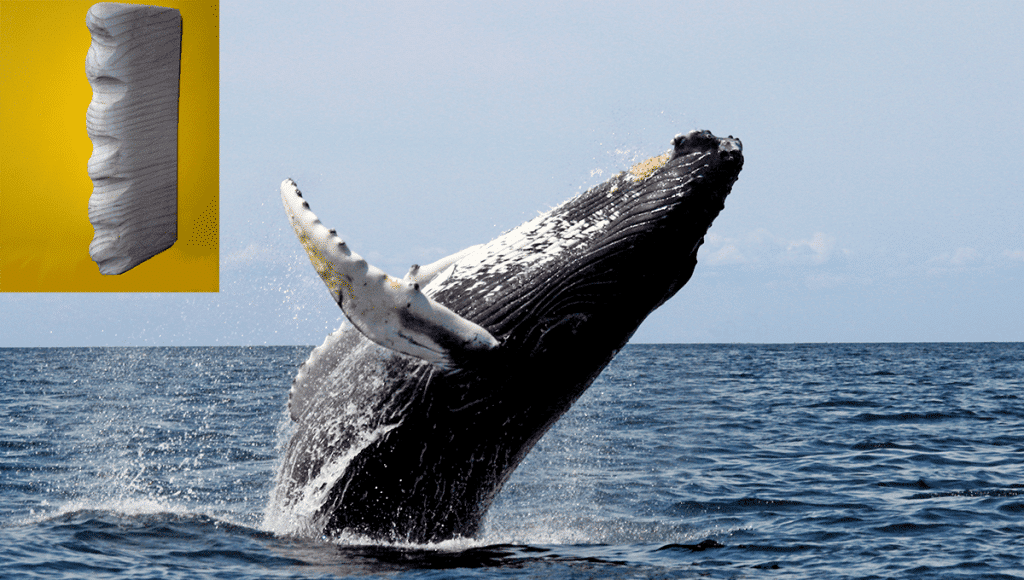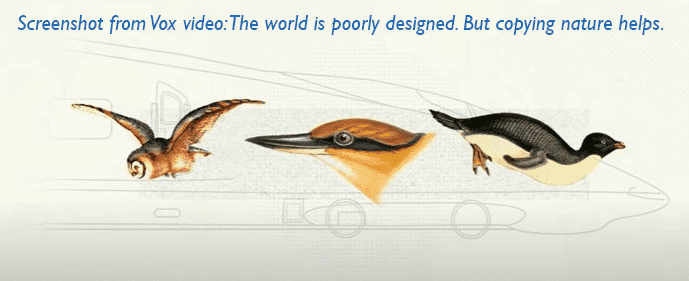
Nature in the Middle (grades 6-8)
Most middle schoolers have heard the warnings from their teachers about the perils of plagiarism; and for good reasons! So listen to your teacher’s advice and practice ethical work habits; trust me, you’ll be glad that you did! But, let me suggest that we do a little bit of plagiarizing this week…let me clarify.
Biomimicry is a term that describes a practice of “copying” the designs and processes of nature to solve human problems. Bio = Life, and Mimicry = Imitate. Let me give you a few examples. Scientific study of the skin patterns in sharks have led to a number of human applications, including the design of speed-boosting swimsuits and bacteria resistant surfaces for use in hospitals. The bumps along the front edge of a humpback whales’ flipper, called tubercles, served as the inspiration for a company that produces blades for wind-power turbines. This “tubercle technology” was able to boost efficiency of wind turbines up to 20%. The computer that you’re now using may even have a small fan inside that uses this tubercle technology to quietly keep your computer from overheating. Very cool!
Check out this short video that will give you some more background about Biomimicry, along with some other fascinating examples.
For this week’s Nature in the Middle activities I’d like to start with having you observe the natural world around you. Take a look at both plants and animals that you can find in your immediate surroundings. Are there trees in your yard? If so, you might start looking there. Check out this short Nature Moments video from Nat Wheelwright for some inspiration.
Next, see if you can come up with either 1) a problem to solve, or 2) a particular adaptation or process that nature does really well. Once you have one, you can either work towards finding a solution in nature to your problem, or find a design application for the particular natural adaptation or process you’ve identified. Be sure to share your ideas with others, who knows, your solution may be the next big breakthrough!
I’ll leave you this week with a fun challenge activity. THE CHALLENGE: See if you can design paper airplanes that can do the following: 1) Go fast and straight. 2) Stay aloft for a long time. Use your new skills in Biomimicry to research bird anatomy -specifically wing and feather shapes (Check out these websites from the Bird Academy and Cornell Lab of Ornithology on feathers and wing shapes). Think about these questions: Which birds fly fastest? Which birds soar long and far? How are the wings and feathers of these birds different? How can this inform my airplane designs? Keep detailed notes and collect data (e.g. time, distance) on each step (or iteration) in your process. Remember, science is all about the process, so record your steps and use both your failures and successes to propel you forward!
Note for Teachers: The activities in this week’s Nature in the Middle fit well with the following NGSS performance indicators: LS1-1, ETS1-2, ETS1-3. Check out this website for more ideas on engaging your students in this week’s topic.
Photo: Humpback whale, photo by Whit Welles used under CC BY 3.0 license

